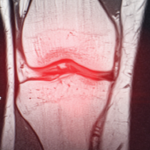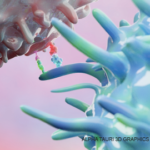 BALTIMORE—One of the greatest advancements in medicine in the past generation has been the ability to examine disease pathogenesis, response to treatment and other issues at the most minuscule level, including that of single cells. At the 17th Annual Advances in the Diagnosis and Treatment of the Rheumatic Diseases meeting at Johns Hopkins University School of Medicine, Baltimore, Clifton O. “Bing” Bingham III, MD, professor of medicine and director of the Arthritis Center at Johns Hopkins School of Medicine, provided a masterful overview of rheumatoid arthritis (RA) with this perspective in mind.
BALTIMORE—One of the greatest advancements in medicine in the past generation has been the ability to examine disease pathogenesis, response to treatment and other issues at the most minuscule level, including that of single cells. At the 17th Annual Advances in the Diagnosis and Treatment of the Rheumatic Diseases meeting at Johns Hopkins University School of Medicine, Baltimore, Clifton O. “Bing” Bingham III, MD, professor of medicine and director of the Arthritis Center at Johns Hopkins School of Medicine, provided a masterful overview of rheumatoid arthritis (RA) with this perspective in mind.
Synovial Tissue Biopsy
An expanded understanding of the pathogenesis of RA is one of the most exciting, cutting-edge areas within rheumatology, Dr. Bingham stated. The Accelerating Medicines Partnership (AMP), a collaborative effort of the National Institutes of Health, the U.S. Food & Drug Administration, and multiple biopharmaceutical and life science companies and non-profit organizations, has the goal of transforming the current model for developing new diagnostics and treatments. One AMP initiative is looking at synovial tissue biopsy in patients with RA to better understand what is happening in these patients at the tissue level.
As a first step in these projects, synovial tissue acquired from patients subsequently undergoes disaggregation. While a sample of the tissue is examined using standard histology, other cells are separated and analyzed, some using flow cytometry and others using mass cytometry. After these cells are sorted into individual populations, they are then subjected to certain forms of analysis that allow the evaluation of RNA sequencing, which can be done both on bulk samples as well as on single-cell sorted samples.
The tissues are then grouped as patients with leukocyte-rich rheumatoid arthritis and a great deal of infiltrating cells present in tissue, and those with leukocyte-poor RA. As a means of comparison, synovial tissue samples from patients with osteoarthritis are also evaluated. These different data sets are then mined using advanced analytical methods to begin to look at what is happening at the single cell level.
Even at this early stage of discovery, interesting insights are being revealed about RA. For example, sublining fibroblasts are highly expressed in RA synovium, whereas lining fibroblasts are more common in osteoarthritis synovium.1 These sublining fibroblasts in RA patients are particularly expressive of interleukin (IL) 6. In contrast, pro-inflammatory myocytes in the synovium of patients with RA produce primarily IL-1.
Populations of autoimmune B cells have been identified in synovial tissue, and T cells (specifically peripheral helper and follicular helper T cells) have also been identified. Among T cells, distinct subsets of CD8+ T cells have been discovered, many of which were not previously known.1 Dr. Bingham noted that all of these data are giving more information about what is happening in the synovial microenvironment in terms of the numbers and types of cells, what they are expressing and where they are located.
Macrophages Evaluated
Work similar to that of the AMP projects is also being done around the world, and Dr. Bingham summarized important findings from a study in Europe in which 45 treatment-naive patients with active RA, 31 patients with treatment-resistant active RA, 36 patients with sustained clinical and ultrasound remission of RA, and 10 healthy controls were evaluated.2 Of the patients in remission, 22 were tapered off biologic treatment and half were then assessed at time of flare and the other half were assessed at time of no flare. The investigators evaluated macrophage populations using single cell RNA sequencing, multi-parameter flow cytometry and immunofluorescence staining.
The authors found that certain macrophage types in the synovial lining layer are lost during flares and regained during periods of remission. Moreover, these cells were noted to have higher production of resolvins and IL-10, suggesting the role of these cells may be in inflammation and repair of tissue.
The significance of these findings, Dr. Bingham explained, is that we are learning that different cell types are found in different locations with distinct functions at various stages of rheumatoid arthritis. This information may be revealing in terms of what types of cells are being produced at different time points of disease, and one could imagine how, in the future, such data may be used to guide targeted treatment for individual patients at varying points in the disease process.
The Future Is Not Far Off
Indeed, the future is not far off, as shown in a 2021 paper that Dr. Bingham discussed in detail. In this study, the authors evaluated patients with RA who had an inadequate response to tumor necrosis factor (TNF) inhibitor therapy.3 These patients underwent synovial biopsy at baseline, and this biopsy was histologically classified as either B cell rich or B cell poor. The biopsies were also subjected to RNA sequencing and reclassified by B cell molecular signature. The patients were then randomized to receive either tocilizumab or rituximab.
The study was designed to test for superiority of tocilizumab over rituximab therapy in the patients with B cell poor synovial biopsies, and the primary endpoint was 50% improvement in the Clinical Disease Activity Index (CDAI 50%) from baseline.
When the groups of patients were classified as B cell poor based on biopsy histology, no significant difference was seen in CDAI 50% response between the tocilizumab and rituximab groups. However, when the groups of patients were classified as B cell poor based on biopsy RNA sequencing, the patients receiving tocilizumab had significantly higher CDAI 50%, compared with the group receiving rituximab (63% vs. 36%, P=0.035).
Thus, as Dr. Bingham explained, RNA sequencing classification showed stronger associations with clinical response compared with histological classification, and this may indicate that expanded use of such technologies in clinical practice may predict which patients will best respond to specific treatments.
In Sum
Dr. Bingham’s lecture was exceptionally thought-provoking and, in very clear terms, helped demonstrate how bench to bedside research will soon reshape the clinical practice of rheumatology. Much remains to be explored in the fields of tissue evaluation, RNA sequencing and related concepts, yet there has not been a more exciting time in the history of medicine to embark on these investigations.
Jason Liebowitz, MD, completed his fellowship in rheumatology at Johns Hopkins University, Baltimore, where he also earned his medical degree. He is currently in practice with Skylands Medical Group, N.J.
References
- Zhang F, Wei K, Slowikowski K, et al. Defining inflammatory cell states in rheumatoid arthritis joint synovial tissues by integrating single-cell transcriptomics and mass cytometry. Nat Immunol. 2019 Jul;20(7):928–942.
- Alivernini S, MacDonald L, Elmesmari A, et al. Distinct synovial tissue macrophage subsets regulate inflammation and remission in rheumatoid arthritis. Nat Med. 2020 Aug;26(8):1295–1306.
- Humby F, Durez P, Buch MH, et al. Rituximab versus tocilizumab in anti-TNF inadequate responder patients with rheumatoid arthritis (R4RA): 16-week outcomes of a stratified, biopsy-driven, multicentre, open-label, phase 4 randomised controlled trial. 2021 Jan 23;397(10271):305–317.

